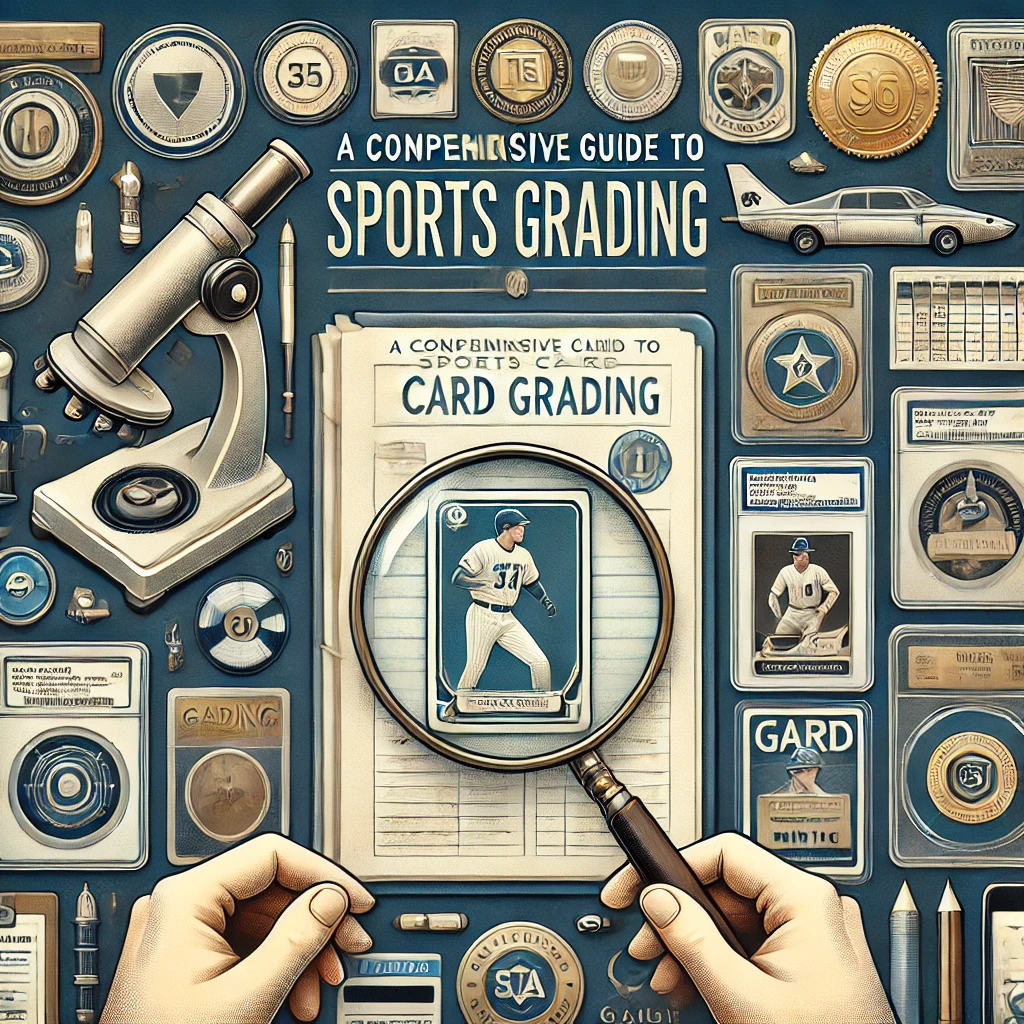Sports card grading is a crucial aspect of the collecting world, as it directly influences the value and desirability of a card. Whether you’re a seasoned collector or just starting, understanding how grading works and its importance can significantly impact your collection’s success.
What is Sports Card Grading?
Sports card grading involves assessing a card’s condition and assigning it a numerical grade, typically on a scale from 1 to 10, with 10 being ‘Gem Mint.’ Grading is done by professional companies who examine the card’s centering, corners, edges, and surface to determine its condition. The grade reflects the card’s overall quality and plays a significant role in its market value.
The Importance of Grading in Sports Cards
Grading provides collectors and buyers with a standardized assessment of a card’s condition, making it easier to compare cards and determine their value. A higher grade generally means a higher value, as collectors are willing to pay a premium for cards in near-perfect condition. Graded cards are also more likely to sell quickly and at higher prices, as buyers have more confidence in the card’s quality and authenticity.
Key Grading Companies and Their Differences
- PSA (Professional Sports Authenticator): PSA is one of the most trusted and widely recognized grading companies. They have a rigorous grading process, and their graded cards often command the highest prices in the market. PSA also offers a registry where collectors can showcase their graded collections.
- BGS (Beckett Grading Services): BGS is known for its detailed grading, which includes subgrades for centering, corners, edges, and surface. This provides collectors with a more comprehensive understanding of the card’s condition. BGS cards are popular among collectors who appreciate the detailed breakdown of a card’s grade.
- SGC (Sportscard Guaranty): SGC is particularly respected in the vintage card market. Their consistent grading and classic black holders make SGC-graded cards appealing to collectors who focus on older cards.
The Grading Process: What to Expect
When you send a card for grading, the process typically involves the following steps:
- Submission: You’ll need to choose a grading company and submit your card through their process. This often involves filling out a submission form and paying a grading fee.
- Evaluation: The grading company will evaluate your card based on various criteria, including centering, corners, edges, and surface. Each aspect is carefully examined to determine the overall grade.
- Encapsulation: Once graded, the card is encapsulated in a tamper-evident holder that displays the grade and other relevant information. This holder protects the card and ensures that the grade cannot be altered.
- Return: After grading, the card is returned to you in its holder, ready for display or sale.
Tips for Submitting Cards for Grading
- Pre-Screen Your Cards: Before sending your cards for grading, carefully examine them for any flaws that might lower their grade. Look for issues like off-centering, bent corners, or surface scratches.
- Consider the Grading Cost: Grading fees can vary depending on the value of the card and the grading company’s turnaround time. Ensure that the potential increase in the card’s value justifies the grading cost.
- Choose the Right Grading Company: Depending on your card’s type and your goals, choose the grading company that best fits your needs. For example, PSA is often preferred for modern cards, while SGC is favored for vintage cards.
Grading is a critical step in maximizing the value of your sports card collection. By understanding the grading process and selecting the right grading company, you can make informed decisions that enhance your collection’s appeal and profitability.


Comments are closed